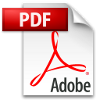CD28 antibody [CD28.2] (APC)
Référence GTX80198-100test
Conditionnement : 100test
Marque : Genetex
Host | Mouse |
|---|---|
Clonality | Monoclonal |
Clone Name | CD28.2 |
Isotype | IgG1 |
Application | FACS |
Reactivity | Human, Baboon, Chimpanzee, Cynomolgus monkey, Rhesus Monkey |
| Package | 100 test |
View product citations for antibody GTX80198 on CiteAb
PRODUCT
Summary
The CD28.2 antibody reacts with human CD28, a 44 kDa type I surface glycoprotein which acts as a co-stimulatory receptor in support of the T cell receptor (TCR). CD28 exists as a homodimer with specificity for two known ligands, known as B7-1 (CD80) and B7-2 (CD86), which are expressed on activated B cells and antigen-presenting cells. These ligands trigger CD28 signaling in concert with TCR activation to drive T cell proliferation, induce high-level expression of IL-2, impart resistance to apoptosis, and enhance T cell cytotoxicity. The interaction / co-stimulatory signaling between the B7 ligands and CD28 provides crucial communication between T cells and B cells or APCs to coordinate the adaptive immune response. Other members of the CD28 family of receptors include CTLA-4 (CD152), PD-1 (CD279), ICOS and BTLA.
APPLICATION
Application Note
*Optimal dilutions/concentrations should be determined by the researcher.
| Application | Recommended Dilution |
|---|---|
| FACS | 0.25 μg (5 μl) for 10⁵-10⁸ cells in 100 μl sample per test |
Not tested in other applications.
Calculated MW
25 kDa. ( Note )
PROPERTIES
Form
Liquid
Buffer
10mM NaH₂PO₄, 150mM NaCl, 0.1% Gelatin
Preservative
0.09% Sodium azide
Storage
Store as concentrated solution. Centrifuge briefly prior to opening vial. Store at 4ºC. DO NOT FREEZE. Protect from light.
Concentration
0.05 mg/ml (Please refer to the vial label for the specific concentration.)
Antigen Species
Human
Immunogen
DC28.1.3.3 murine T cell hybridoma transfected with human CD28 cDNA
Purification
Purified by affinity chromatography
From tissue culture supernatant
From tissue culture supernatant
Conjugation
Allophycocyanin (APC)
Note
For laboratory research use only. Not for any clinical, therapeutic, or diagnostic use in humans or animals. Not for animal or human consumption.
Purchasers shall not, and agree not to enable third parties to, analyze, copy, reverse engineer or otherwise attempt to determine the structure or sequence of the product.
Purchasers shall not, and agree not to enable third parties to, analyze, copy, reverse engineer or otherwise attempt to determine the structure or sequence of the product.
TARGET
Synonyms
CD28 molecule , Tp44
Cellular Localization
Membrane; Single-pass type I membrane protein
Background
The protein encoded by this gene is essential for T-cell proliferation and survival, cytokine production, and T-helper type-2 development. Several alternatively spliced transcript variants encoding different isoforms have been found for this gene.[provided by RefSeq, Jul 2011]
Database
DATA IMAGES
![Anti-CD28 antibody [CD28.2] (APC) used in Flow cytometry (FACS). GTX80198 Anti-CD28 antibody [CD28.2] (APC) used in Flow cytometry (FACS). GTX80198](http://www.genetex.com/templates/default/js/lightbox/images/loading.gif) | GTX80198 FACS Image FACS analysis of human peripheral blood lymphocytes using GTX80198 CD28 antibody [CD28.2] (APC). |
Clone Reference
2020; TRIM34 restricts HIV-1 and SIV capsids in a TRIM5α-dependent manner
2019; Contribution of ROS and metabolic status to neonatal and adult CD8+ T cell activation
2019; A predicted Francisella tularensis DXD-motif glycosyltransferase blocks immune activation
2014; The Effects of Age and Cytomegalovirus on Markers of Inflammation and Lymphocyte Populations in Captive Baboons
2013; Protection against H5N1 highly pathogenic avian and pandemic (H1N1) 2009 influenza virus infection in cynomolgus monkeys by an inactivated H5N1 whole particle vaccine
Submit a Reference REVIEW
Clone Reference
2020; TRIM34 restricts HIV-1 and SIV capsids in a TRIM5α-dependent manner
2019; Contribution of ROS and metabolic status to neonatal and adult CD8+ T cell activation
2019; A predicted Francisella tularensis DXD-motif glycosyltransferase blocks immune activation
2014; The Effects of Age and Cytomegalovirus on Markers of Inflammation and Lymphocyte Populations in Captive Baboons
2013; Protection against H5N1 highly pathogenic avian and pandemic (H1N1) 2009 influenza virus infection in cynomolgus monkeys by an inactivated H5N1 whole particle vaccine
2012; Treatment of SIV-infected sooty mangabeys with a type-I IFN agonist results in decreased virus replication without inducing hyperimmune activation
2012; Naive T cells are dispensable for memory CD4+ T cell homeostasis in progressive simian immunodeficiency virus infection
2012; Soluble factors from T cells inhibiting X4 strains of HIV are a mixture of β chemokines and Rnases
2011; Blocking of α4β7 gut-homing integrin during acute infection leads to decreased plasma and gastrointestinal tissue viral loads in simian immunodeficiency virus-infected rhesus macaques
2010; Relative over-reactivity of human versus chimpanzee lymphocytes: implications for the human diseases associated with immune activation
2009; The lack of epithelial interleukin-7 and BAFF/BLyS gene expression in prostate cancer as a possible mechanism of tumor escape from immunosurveillance
2008; ICOS ligation recruits the p50alpha PI3K regulatory subunit to the immunological synapse
2008; Regulation of CD28 expression on CD8+ T cells by CTLA-4
2000; Interelationship between CD3 and CD28 pathways in a murine T cell thymoma
| SDS | |
|---|---|
| PBS.pdf | |
| Sodium Azide.pdf | |




 Datasheet File
Datasheet File